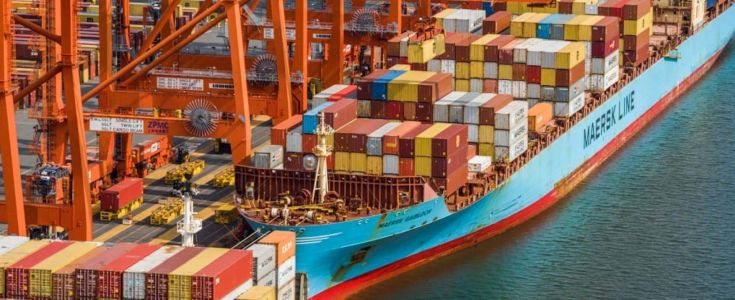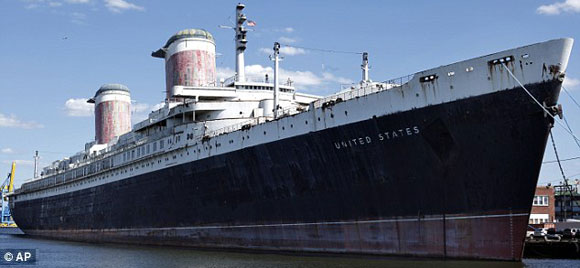 We are now in day 2 of the first International Longshoremen’s Association (ILA) strike in almost 50 years. The ILA represents 45,000 dockworkers at 36 ports from Maine to Texas on the East and Gulf coasts of the United States. The strike is over wages and the use of automation on the docks.
We are now in day 2 of the first International Longshoremen’s Association (ILA) strike in almost 50 years. The ILA represents 45,000 dockworkers at 36 ports from Maine to Texas on the East and Gulf coasts of the United States. The strike is over wages and the use of automation on the docks.
The two sides are attempting to negotiate a six-year master contract between ILA port workers employed in container and roll-on/roll-off operations, and the US Maritime Alliance, known as USMX, representing shipping firms, port associations, and marine terminal operators.
More than a third of US exports and imports could be affected by the strike, hitting the nation’s economic growth to the tune of at least $4.5bn each week of the strike, according to Grace Zemmer, an associate US economist at Oxford Economics, though others have estimated the economic hit could be higher, according to the BBC.
Labor actions have a long history in the maritime trades. The first recorded use of the word “strike” to describe a labor protest dates to April of 1768 when sailors in the Port of Sunderland in Great Britain announced that they would “strike the topsails” of merchant ships to prevent them from sailing unless wages were increased. The ship owners subsequently agreed to their demands.
Continue reading →
 We are a few days late in wishing the US Navy a happy 249th birthday. October 13th, is celebrated as the birthday of the United States Navy. This should not be confused with Navy Day, once celebrated on October 27th. The current “birthday” may have more to do with bragging rights than real birthdays. An updated repost.
We are a few days late in wishing the US Navy a happy 249th birthday. October 13th, is celebrated as the birthday of the United States Navy. This should not be confused with Navy Day, once celebrated on October 27th. The current “birthday” may have more to do with bragging rights than real birthdays. An updated repost.

 A new National Geographic documentary “
A new National Geographic documentary “

 The longshoremen’s strike appears to have ended with a tentative agreement on wages. This afternoon, the ILA and the USMX released a
The longshoremen’s strike appears to have ended with a tentative agreement on wages. This afternoon, the ILA and the USMX released a We are now in day 2 of the first
We are now in day 2 of the first  The initial reports were bizarre. On Friday, Tommaso Bertuccelli, a lawyer who works with The Italian Sea Group (TISG), the builder of the superyacht Bayesian that sank at anchor in August off Sicily, killing Mike Lynch and six other passengers, filed a €222 million ($244 million) lawsuit against Lynch’s widow and crewmembers of the ship, citing reputational damage.
The initial reports were bizarre. On Friday, Tommaso Bertuccelli, a lawyer who works with The Italian Sea Group (TISG), the builder of the superyacht Bayesian that sank at anchor in August off Sicily, killing Mike Lynch and six other passengers, filed a €222 million ($244 million) lawsuit against Lynch’s widow and crewmembers of the ship, citing reputational damage. We recently
We recently  The US Navy commissioned its first-ever coed submarine, the Virginia-class attack submarine
The US Navy commissioned its first-ever coed submarine, the Virginia-class attack submarine  How many whales and other marine mammals frequent the waters adjoining the New York Metropolitan Region? At last count, at least 400, which was news to me. This is according to
How many whales and other marine mammals frequent the waters adjoining the New York Metropolitan Region? At last count, at least 400, which was news to me. This is according to  An updated repost. There is a line from a Paul Simon song, “These are the days of miracle and wonder.” One might not think to apply that lyric to the events of 9/11, 23 years ago today. Yet for at least part of that strange and horrible day, they fit.
An updated repost. There is a line from a Paul Simon song, “These are the days of miracle and wonder.” One might not think to apply that lyric to the events of 9/11, 23 years ago today. Yet for at least part of that strange and horrible day, they fit. Three years ago, we
Three years ago, we  Animal rights groups on Wednesday said gunfire killed a
Animal rights groups on Wednesday said gunfire killed a  The sailing cargo ship
The sailing cargo ship  Hvaldimir, the beluga “spy” whale has died. The Norwegian public broadcaster
Hvaldimir, the beluga “spy” whale has died. The Norwegian public broadcaster At about 6:15 this morning, local time, the
At about 6:15 this morning, local time, the  A crew of 6 adventurers set sail on a 500-nautical-mile voyage in the North Sea from Tvøroyri on the Faroe Islands bound for Trondheim, Norway aboard Naddoddur, a 33′ long Faroese Viking ship replica. The voyage, expected to take 3-5 days, ended in tragedy last Tuesday when the craft capsized in high seas near Norway’s dreaded
A crew of 6 adventurers set sail on a 500-nautical-mile voyage in the North Sea from Tvøroyri on the Faroe Islands bound for Trondheim, Norway aboard Naddoddur, a 33′ long Faroese Viking ship replica. The voyage, expected to take 3-5 days, ended in tragedy last Tuesday when the craft capsized in high seas near Norway’s dreaded 